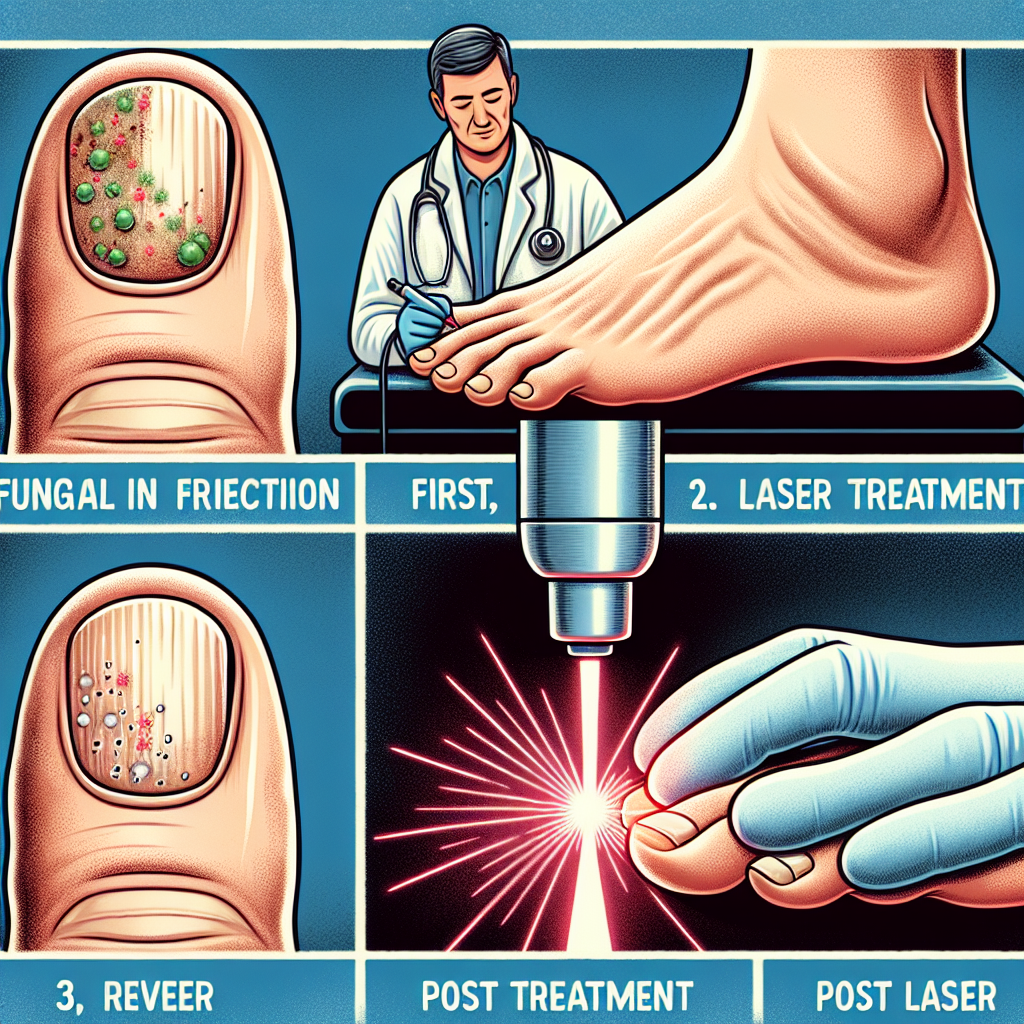As a society, we’re somewhat obsessed with the idea of perfect, shiny, chip-free nails. Manicures and pedicures are in high demand, and beautifully cared for fingertips and toes are seen as a social status symbol. But what happens when beneath our shiny polish, a less glamorous and often frustrating condition takes hold – nail fungus? Traditionally, oral medication was often prescribed, but today, there’s a buzz about a newer, sleeker, faster-acting treatment gaining traction: laser treatment. It’s about time to cast a spotlight on nail fungus to unravel the impact of laser treatments.
Nail fungus, or onychomycosis, is a common condition wherein a fungus infects one or more of your nails. This can affect not only the appearance of the nails, making them yellowish, thickened, and crumbly, but it can also cause pain, discomfort, and difficulties in performing everyday tasks.
Traditional treatments against nail fungus have included over-the-counter treatments, prescriptions of topical ointments, and oral anti-fungal drugs. However, these remedies have varying levels of effectiveness, with recurrences of the infection a common problem. In recent years, laser treatments have emerged as a more effective and minimally invasive solution.
Laser treatment for nail fungus works by focusing a laser light on the affected area in short bursts. The heat generated by the laser light is designed to kill the fungus without damaging the surrounding healthy tissue. Laser treatments are non-invasive, often painless, and have a quicker recovery time compared to traditional anti-fungal medication.
Several studies have shown positive results with laser treatments used for nail fungus. For example, a 2013 study published in the Journal of the American Podiatric Medical Association found a “statistically significant improvement” in patients treated with lasers compared to those who received other treatments.
The benefits of laser treatments for nail fungus include:
– No side effects as opposed to oral medications that may cause side effects such as nausea, liver damage, skin rash, and a change in taste.
– Minimal discomfort during procedures compared to traditional surgical methods.
– Successful treatment of persistent cases that have failed to respond to other treatments.
– No downtime post-treatment, allowing for a return to normal activities immediately.
– Visible results soon after the treatment.
Indeed, laser treatments are shining a new light on effectively combating nail fungus. However, the best approach to nail health is a preventative one. Empower yourself by following these five tips related to maintaining healthy nails and preventing nail fungus:
1. Keep Nails Trimmed and Clean: Trimming your nails regularly and ensuring they are clean reduces the chances of fungus finding a foothold.
2. Dry Feet Thoroughly: Fungus thrives in moist environments. Make sure you dry your feet well, especially between the toes, after showers, swimming, or sweating.
3. Wear Breathable Footwear: Choose shoes and socks made of breathable materials. Changing socks regularly can also help.
4. Avoid Barefoot in Public Areas: Public pools, showers, and locker rooms are breeding grounds for fungus. Always wear flip-flops or shower shoes in these areas.
5. Don’t Share Personal Items: Nail clippers, towels, shoes, or socks can all harbor fungus. Avoid sharing these items to prevent spread and infection.
In conclusion, the advent of laser treatments for nail fungus is groundbreaking. It outshines traditional remedies by offering quicker, safer, and more effective results without the systemic side effects observed with oral medications. By understanding this new treatment and incorporating the necessary preventive measures, you can keep your nails shiny and healthy, all while fending off this stubborn, unwanted intruder. Laser treatments may be the bright light at the end of the tunnel for those suffering from persistent nail fungus.







